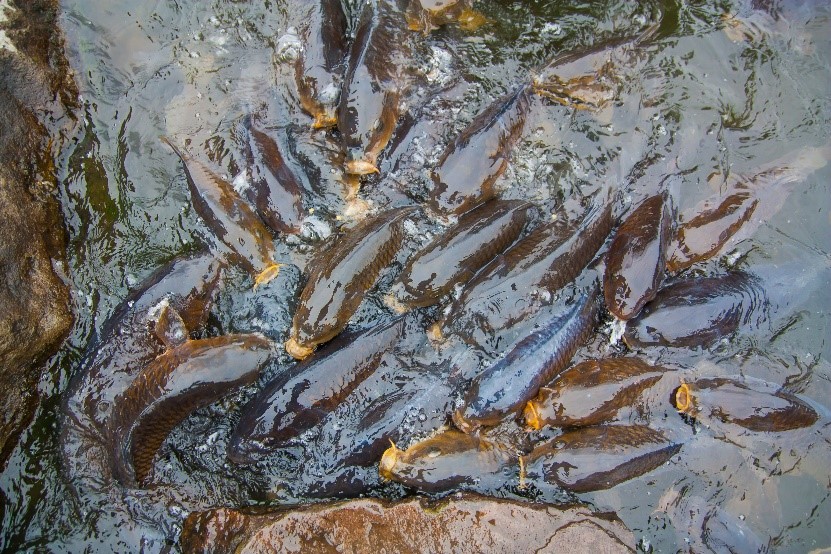
The National Carp Control Program
Carp are one of the country’s most devastating pests and dominate the Murray Darling Basin, making up to 80 to 90 per cent of fish biomass. Carp impact freshwater ecosystems across Australia, with significant negative effects on water quality, the amenity value of our freshwater environments and biodiversity.
The Australian Government committed $15.2 million to investigate the feasibility of using the Cyprinid herpesvirus 3 (the carp virus) as a potential biocontrol agent for carp as part of a long-term biological control program. As part of this funding, the Fisheries Research and Development Corporation (FRDC) undertook a collaborative research program to assess the use of the carp virus. In late 2022, the FDRC completed the National Carp Control Plan (NCCP), the culmination of six years’ work involving eleven national and international research institutions and over 40 research scientists. The NCCP represents the largest body of research ever undertaken to evaluate the possible use of a biological control agent for an aquatic pest.
The research program underpinning the NCCP made several key contributions to increase our knowledge of the virus. For example, it demonstrated that the virus will not affect humans or other mammals and increased our understanding of the susceptibility of non-target native fish. It also confirmed the importance of direct transmission of the virus between carp and delivered tools to improve knowledge in the area of genetic resistance. The NCCP outlined uncertainties regarding the release of the virus and provided recommendations for further work, including an evidence base to help decision makers determine next steps.
The NCCP is only the first step of several important stages needed to adequately consider the release of the carp virus. The department is facilitating the process to enable all Australian governments to formally consider the NCCP and the next steps in the program. In deciding to proceed further with the program, all governments will need to be satisfied that the virus is safe; that it will be effective in significantly reducing carp populations for the medium- to long term; and that virus release will be cost-effective.
Any potential release of the virus is expected to take several years, and will not occur without further research, implementation planning, regulatory approvals, agreement from all relevant jurisdictions, and extensive stakeholder consultation.
For more information of the NCCP and next steps visit: http://www.agriculture.gov.au/pests-diseases-weeds/pest-animals-and-wee… and the FRDC’s website https://www.frdc.com.au/knowledge-hub/national-carp-control-plan.

